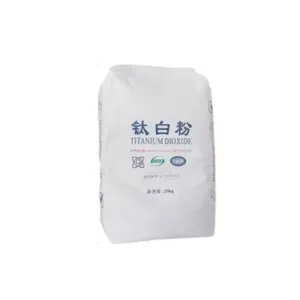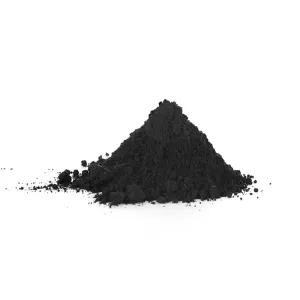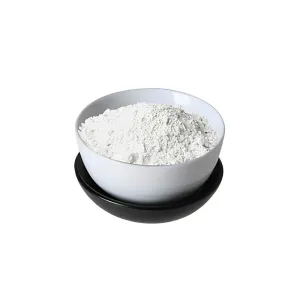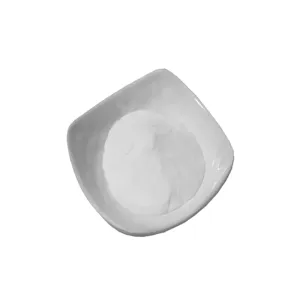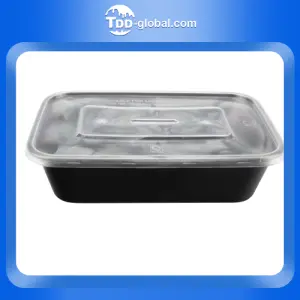Titanium dioxide is an important inorganic chemical pigment whose main component is titanium dioxide. There are two production processes for titanium dioxide: sulfuric acid method and chlorination method. It has important uses in industries such as coatings, inks, papermaking, plastics and rubber, chemical fibers, and ceramics.
Main features #
physical properties
1. Relative density
Among commonly used white pigments, titanium dioxide has the smallest relative density. Among white pigments of the same mass, titanium dioxide has the largest surface area and the highest pigment volume.
2. Melting point and boiling point
Since the anatase form converts to the rutile form at high temperatures, the melting and boiling points of anatase titanium dioxide are virtually non-existent. Only rutile titanium dioxide has a melting point and a boiling point. The melting point of rutile titanium dioxide is 1850°C, the melting point in air is (1830±15)°C, and the melting point in rich oxygen is 1879°C. The melting point is related to the purity of titanium dioxide. The boiling point of rutile titanium dioxide is (3200±300)℃. At this high temperature, titanium dioxide is slightly volatile.
3. Dielectric constant
Due to its high dielectric constant, titanium dioxide has excellent electrical properties. When measuring certain physical properties of titanium dioxide, the crystallographic direction of the titanium dioxide crystals should be considered. The dielectric constant of anatase titanium dioxide is relatively low, only 48.
4. Conductivity
Titanium dioxide has semiconductor properties, its conductivity increases rapidly with temperature, and it is also very sensitive to oxygen deficiency. The dielectric constant and semiconductor properties of rutile titanium dioxide are very important to the electronics industry, and these properties can be used to produce electronic components such as ceramic capacitors.
5. Hardness
According to the Mohs hardness scale, rutile titanium dioxide is 6 to 6.5, and anatase titanium dioxide is 5.5 to 6.0. Therefore, anatase titanium dioxide is used in chemical fiber matting to avoid wearing spinnerets.
6. Hygroscopicity
Although titanium dioxide is hydrophilic, its hygroscopicity is not very strong, and the rutile type is smaller than the anatase type. The hygroscopicity of titanium dioxide is related to the size of its surface area. Large surface area means high hygroscopicity. It is also related to surface treatment and properties.
7. Thermal stability
Titanium dioxide is a substance with good thermal stability.
8. Granularity
The particle size distribution of titanium dioxide is a comprehensive index, which seriously affects the performance of titanium dioxide pigments and product application properties. Therefore, the discussion of hiding power and dispersion can be directly analyzed from the particle size distribution.
The factors that affect the particle size distribution of titanium dioxide are relatively complex. The first is the size of the original particle size of hydrolysis. By controlling and adjusting the hydrolysis process conditions, the original particle size is within a certain range. The second is the calcination temperature. During the calcination of metatitanic acid, the particles undergo a crystal transformation period and a growth period. The appropriate temperature is controlled to keep the growth particles within a certain range. The last step is the crushing of the product. Usually the Raymond mill is modified and the analyzer speed is adjusted to control the crushing quality. At the same time, other crushing equipment can be used, such as universal mill, jet pulverizer and hammer mill device.
Crystal structure
Titanium dioxide has three crystal forms in nature: rutile, anatase and plate titanium. The plate titanium type belongs to the orthorhombic crystal system and is an unstable crystal form. It transforms into the rutile type above 650°C, so it has no practical value in industry. The anatase type is stable at room temperature, but transforms to the rutile type at high temperatures. The conversion intensity depends on the manufacturing method and whether inhibitors or accelerators are added during the calcination process.
It is generally believed that there is almost no crystalline transformation below 165°C, and the transformation occurs quickly when it exceeds 730°C. The rutile type is the most stable crystalline form of titanium dioxide. It has a dense structure and has higher hardness, density, dielectric constant and refractive index than the anatase type. Rutile and anatase both belong to the tetragonal crystal system, but have different crystal lattices, so the X-ray images are also different. The diffraction angle of anatase titanium dioxide is 25.5°, and the diffraction angle of rutile is 27.5°. The crystals of the rutile type are slender, prismatic, and usually twinned; while the anatase type is generally approximately a regular octahedron.
Compared with the anatase type, the unit lattice of the rutile type is composed of two titanium dioxide molecules, while the anatase type is composed of four titanium dioxide molecules. Therefore, its unit lattice is smaller and more compact, so it has greater stability. properties and relative density, so it has a higher refractive index and dielectric constant and lower thermal conductivity.
Among the three isomers of titanium dioxide, only the rutile type is the most stable, and only the rutile type can be obtained through thermal conversion. Natural brookite converts to rutile type above 650℃, and anatase can also convert to rutile type at around 915℃.
chemical properties
The chemical properties of titanium dioxide are extremely stable and it is a slightly acidic amphoteric oxide. It hardly reacts with other elements and compounds at room temperature. It has no effect on oxygen, ammonia, nitrogen, hydrogen sulfide, carbon dioxide, and sulfur dioxide. It is insoluble in water, fat, dilute acid, inorganic acid, and alkali. It is only soluble in hydrogen.
Hydrofluoric acid. However, under the action of light, titanium dioxide can undergo continuous oxidation-reduction reactions and is photochemically active. This kind of photochemical activity is particularly obvious in anatase titanium dioxide under ultraviolet irradiation. This property makes titanium dioxide both a photosensitive oxidation catalyst for some inorganic compounds and a photosensitive reduction catalyst for some organic compounds.
Emergency treatment: Isolate the leaked contaminated area and restrict access. It is recommended that emergency responders wear dust masks (full face masks) and general work clothes. Avoid raising dust, sweep it up carefully, put it in a bag and transfer it to a safe place. If there is a large amount of leakage, cover it with plastic sheeting or canvas. Collect and recycle or transport to waste disposal site for disposal.
Titanium dioxide (or titanium dioxide) is widely used in various structural surface coatings, paper coatings and fillers, plastics and elastomers. Other uses include ceramics, glass, catalysts, coated fabrics, printing inks, roofing granules and fluxes. According to statistics, global demand for titanium dioxide reached 4.6 million tons in 2006, of which the coating industry accounted for 58%, the plastics industry accounted for 23%, papermaking 10%, and others 9%. Titanium dioxide can be produced from ilmenite, rutile or titanium slag. There are two production processes for titanium dioxide: sulfate process and chloride process. The sulfate process is simpler than the chloride process and can use low-grade and cheaper minerals. Today, about 47% of the world’s production capacity uses the sulfate process and 53% of the world’s production capacity uses the chloride process.
Recognition Methods #
Physical method:
1.The simplest way is to compare the feel. Fake titanium dioxide is smoother, while real titanium dioxide is astringent.
2.Rinse with water and put some titanium dioxide on your hands. If it is fake, it will be easy to wash off, but if it is true, it will not be easy to wash off.
3.Take a cup of water and throw titanium dioxide into it. What floats up is true and what settles down is false (if it is an activation-modified product, it will not work).
chemical method:
1.Mixed with light calcium or heavy calcium: Adding dilute sulfuric acid or hydrochloric acid with bubbles can make the clear lime water turbid, because calcium carbonate will react with the acid to produce carbon dioxide.
2.Mixed with lithopone: add dilute sulfuric acid or hydrochloric acid, it will smell like rotten eggs.
3.Made into latex paint, iron red is added, and the color is dark, indicating that the poor hiding power is fake or poor quality titanium dioxide.
There are also two better methods:
1.Using the same PP+30%GF+5%PP-G-MAH+0.5% titanium dioxide, the lower the intensity, the more real the titanium dioxide (rutile).
2.Choose a transparent resin, such as transparent ABS+0.5% titanium dioxide, and measure the light transmittance. The lower the light transmittance, the more authentic the titanium dioxide.
Ingredient structure #
It has two structures: rutile type (Rutile R type) and anatase type (Anatase A type). The rutile crystal structure is dense, relatively stable, and has low optical activity, so it has good weather resistance, high covering power, and achromatic power. .
Application areas #
The main application areas of titanium dioxide are: coatings, plastics, inks, papermaking, of which coatings account for 60%, plastics account for 20%, papermaking accounts for 14%, and others (including cosmetics, chemical fibers, electronics, ceramics, enamel, welding rods, alloys, glass, etc. field) accounted for 6%.
Titanium dioxide is used as a colorant in the rubber industry and has reinforcing, anti-aging and filling functions. Adding titanium dioxide to white and colored rubber products makes them resistant to sunlight, no cracking, no discoloration, high elongation, and acid and alkali resistance under sunlight. Titanium dioxide for rubber is mainly used in automobile tires, rubber shoes, rubber floors, gloves, sports equipment, etc., and is generally anatase type. However, when used in automobile tire production, a certain amount of rutile products are often added to enhance ozone and ultraviolet resistance.
Titanium dioxide is also increasingly used in cosmetics. Since titanium dioxide is non-toxic and far superior to lead white, titanium dioxide is used in almost all kinds of fragrance powders to replace lead white and zinc white. Just add 5%-8% titanium dioxide to the fragrance powder to obtain a permanent white color, making the fragrance smoother, with adhesion, absorption and covering power. In gouache and cold cream, titanium dioxide can reduce the greasy and transparent feeling. Titanium dioxide can also be used in various other fragrances, sunscreens, soap flakes, white soaps and toothpastes.
Research Development #
The environmental protection cost of titanium dioxide is about 100 yuan/ton. If the national titanium dioxide industry access standards are introduced, quite a few companies will face a huge crisis. In addition, environmental protection costs will increase and product prices will rise. The situation is especially severe for small and medium-sized enterprises.
For a long time, the access conditions for the titanium powder industry have varied across regions, and “local protectionism” has been prevalent in the field of titanium powder production. Tianxia Private Equity reported at the end of January that the Ministry of Industry and Information Technology had begun to formulate access conditions for the titanium powder industry, but no policy has been issued. Business analysts said that there are various signs that titanium powder industry access standards are to be introduced.
The Nobel Prize in Chemistry will be announced, and the more popular candidates include titanium dioxide-related R&D personnel. Therefore, titanium dioxide concept stocks such as Annada have surged. At the same time, titanium dioxide prices fluctuate strongly at high levels, and there is still the possibility of a breakthrough. Therefore, the stock price trend of related stocks such as Billions may be optimistic.
The National Development and Reform Commission issued the “Twelfth Five-Year Plan for Comprehensive Utilization and Industrial Development of Vanadium and Titanium Resources”. The “Plan” proposes seven tasks, including: strictly controlling the output of vanadium-extracted steel; promoting the construction of industrial bases; strengthening resource protection and comprehensive utilization; accelerating the elimination of backward production capacity; cultivating high-end markets; accelerating technological innovation and industrial application. Promote a number of major core technology research and achieve major technological breakthroughs; strengthen energy conservation, emission reduction and environmental protection.
The “Plan” also proposes strict market access, implementation of financing policies with guarantees and pressures, strict management of land supply, encouraging comprehensive utilization of tailings waste, promoting direct purchase of electricity trading pilots, strengthening macro guidance and industry management, and timely summarizing and Seven implementation safeguard measures including publicity and promotion.

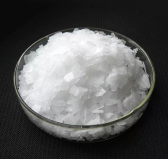
 June 3, 2024
June 3, 2024 

